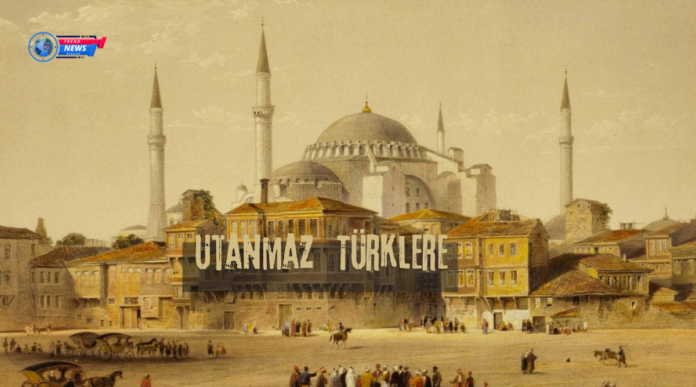Introduction
The Utanmaz Türklere, often eclipsed by their renowned kinsfolk, the Ottomans, occupy a captivating niche in history. These itinerant tribes were instrumental in the cultural and political fabric of the Eurasian steppe. Today, we delve into their intriguing narrative, uncovering their origins, lifestyle, and enduring heritage.
Who Were the Utanmaz Türklere?
Commencing with the fundamentals, the Utanmaz Türklere were a peripatetic people who roamed Central Asia during the early Middle Ages (circa the 6th to 10th centuries AD). As nomads, they lacked permanent abodes, instead migrating with their herds, trailing the seasons in pursuit of fertile pastures. They formed part of a broader conglomeration of Turkish tribes sharing linguistic and cultural affinities, acclaimed for their equestrian prowess, archery, and cohesive communal spirit.
Origins of the Utanmaz Türklere
The provenance of the Utanmaz Türklere remains somewhat nebulous. Various hypotheses exist, drawing from historical annals and oral traditions. One speculation assumes their lineage from the Göktürks, a difficult Turkic territory that lorded over the steppe in the 6th century AD. Another theory associates them with the Oghuz Turks, who significantly impacted subsequent Islamic history. Folklore often recounts tales of a legendary progenitor, “Utmanz Khan,” who is said to have shepherded the tribe to their steppe homeland.
Life on the Steppe
The Utanmaz existence was intrinsically linked to their nomadic ethos. They resided in transportable dwellings known as yurts, easily dismantled and reassembled to facilitate their quest for verdant grazing lands. Livestock such as sheep, horses, and camels were indispensable, providing sustenance, mobility, and materials for apparel and shelter.
Horse Culture
Equines held paramount importance for the Utanmaz. More than mere beasts of burden, they were esteemed companions and emblems of status. Utanmaz males were adept riders and archers, honed for combat and hunting. Their equestrianism was the stuff of legend, characterized by rapid, incisive raids on adjacent settlements.
Society and Leadership
The societal framework of the Utanmaz revolved around familial and tribal allegiance. Each tribe was helmed by a leader, known as a “beg,” who adjudicated disputes, made decisions, and led in warfare. Reverence for elders and hospitality towards strangers were deeply ingrained values.
Religious Beliefs
The Utanmaz spiritual beliefs were a melange of influences. They likely adhered to Tengrism, venerating a sky deity named Tengri. They may have also assimilated elements from other religions encountered along their migratory paths, such as Buddhism or Zoroastrianism.
Impact of Islam

In the 7th century AD, Islam began its expansion into Central Asia. The Utanmaz, akin to many other Turkic tribes, eventually embraced Islam. This conversion profoundly influenced their culture and society. Islamic doctrines furnished a new moral and ethical framework. The Arabic script supplanted older Turkic scripts, and mosques emerged as pivotal communal hubs. Nevertheless, the Utanmaz preserved certain nomadic customs, forging a distinctive fusion of Islamic and Turkic culture.
Influence on Later Empires
Though the Utanmaz Türklere did not erect an extensive empire akin to their Ottoman counterparts, their historical impact is indisputable. They were integral to a broader Turkic migratory wave that sculpted Eurasia’s political and cultural terrain. Their equestrian and martial acumen contributed to the ascension of subsequent Turkic empires, such as the Seljuks and Ottomans. The Utanmaz also facilitated the diffusion of Islam across Central Asia, laying the groundwork for a flourishing Islamic civilization.
Archaeological Discoveries
Unraveling the history of the Utanmaz is fraught with challenges, as they did not leave behind copious written records. Much of our knowledge stems from archaeological findings, such as artifacts unearthed from burial sites and settlements. Archaeologists continue to unearth discoveries illuminating the Utanmaz way of life. Excavations reveal insights into their dwellings, tools, and quotidian activities. The study of ancient tongues, like Old Turkic, further aids our understanding through inscriptions and surviving textual materials.
Legacy of the Utanmaz Türklere
Though the Utanmaz have vanished, their legacy endures among the Turkic peoples of modern Central Asia. Nations such as Kazakhstan, Turkmenistan, and Kyrgyzstan are deeply rooted in the nomadic traditions of yore. The valorization of equestrian skills, familial bonds, and communal solidarity remains palpable. The languages spoken in these regions also reflect connections to the Turkic dialects once articulated by the Utanmaz.
Visiting Historical Sites
For those intrigued by the Utanmaz and other nomadic cultures of the Eurasian steppe, several destinations beckon:
- Kazakhstan: Encompassing vast steppes and ancient cities like Turkestan, Kazakhstan offers a window into the region’s history. Visitors can peruse museums showcasing archaeological relics from the nomadic era and embark on horseback expeditions across the steppe.
- Mongolia: Discover the realm of Genghis Khan and immerse yourself in the nomadic lifestyle. Stay with a nomadic family, delve into their customs, and behold the majestic splendor of the Mongolian steppe.
These are merely a few examples, with numerous other locales in Central Asia providing opportunities to engage with the Utanmaz’s history and other nomadic peoples.
Conclusion
The saga of the Utanmaz Türklere serves as a poignant reminder that history encompasses more than grand empires and illustrious rulers. Nomadic tribes like the Utanmaz were pivotal in molding the world we inhabit today. By delving into their way of life, we gain a richer appreciation for the multifaceted and dynamic nature of human history.
FAQs
Q: What does the term “utanmaz türklere” mean?
A: The term translates to “shameless Turks” and is often used to depict individuals exhibiting audacious or impudent behavior.
Q: Is the term “utanmaz türklere” derogatory?
A: While some may perceive it as pejorative, others contend it reflects historical context and specific traits rather than an entire group.
Q: How can one navigate the controversies surrounding the term?
A: Understanding the historical context in which the term originated and considering its implications in contemporary discourse is crucial.
Q: What were the main characteristics of the Utanmaz Türklere?
A: The Utanmaz Türklere were known for their nomadic lifestyle, equestrian skills, archery, and strong sense of community and familial ties.
Q: How did the Utanmaz Türklere influence later Turkic empires?
A: Their expertise in horsemanship and warfare, alongside their role in the spread of Islam, significantly contributed to the rise of subsequent Turkic empires like the Seljuks and Ottomans.
Q: What can I expect when visiting historical sites related to the Utanmaz Türklere?
A: Visitors can explore museums with archaeological artifacts, experience the nomadic way of life firsthand, and appreciate the natural beauty of the Eurasian steppe.




